Hoverflies
I used to think “Oh, there’s a hoverfly”. Then I realised they weren’t all the same! In fact there are over 280 species in the British Isles and quite a lot can be found in the Combe Valley Countryside Park.
Hoverflies are members of the order Diptera, true flies, all of which have only one pair of wings. Many of them have developed features that mimic bees and wasps, which have two pairs of wings. However, hoverflies are harmless as they do not sting or bite.
Some hoverflies can be seen all year round but the peak season is between April and September. The adults love feeding on nectar so flowers are the place to look and in the valley they seem particularly fond of the umbellifers. Sometimes several species can be found on a single umbellifer head. Many hoverflies will also visit your garden where their larvae are useful as some of them just love aphids.
The photographs show some of the more numerous or more distinctive hoverflies that can be found in the valley. Unfortunately there are hardly any standard English names for hoverflies.
Chrysotoxum bicinctum
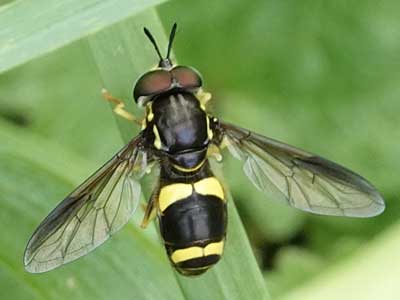
Not very common in the Park but the abdominal markings make it easy to spot.
Episyrphus balteatus
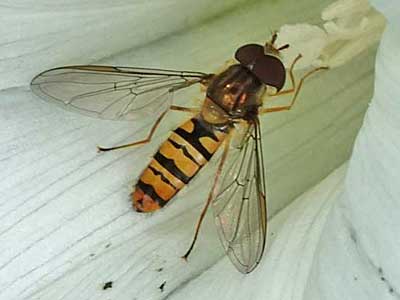
Britain's most common hoverfly, often called the Marmalade Hoverfly it has very distinctive markings.
Eristalis species
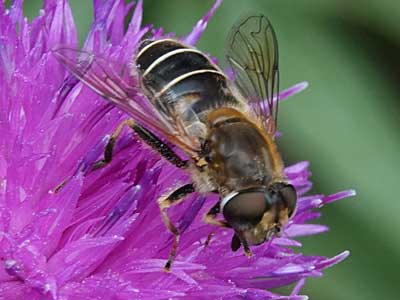
Commonly seen, but there are several Eristalis species that are difficult to tell apart
Myathropa florea
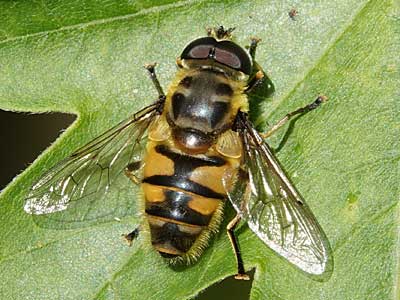
Usually known as the Batman Hoverfly because of the distinctive shape on its thorax this hoverfly is fairly common
Helophilus pendulus
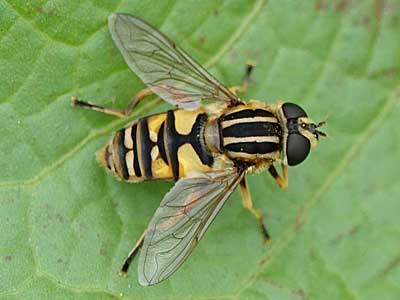
One of several similar species that have these parallel markings along their thorax.
Sphaerophoria scripta
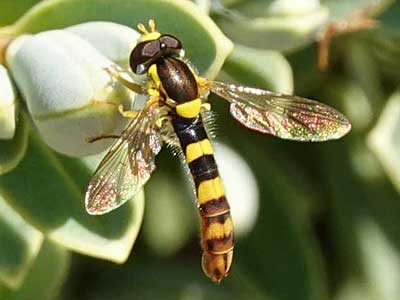
A hoverfly with a narrow abdomen that is, unusually, distinctly longer than its wings
Syrphus species
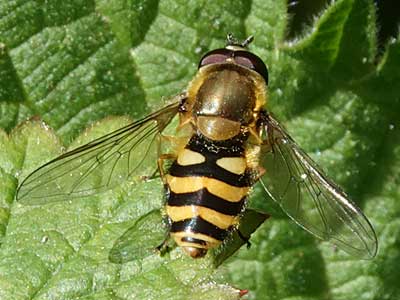
Another common hoverfly that has several very similar species
Syritta pipiens
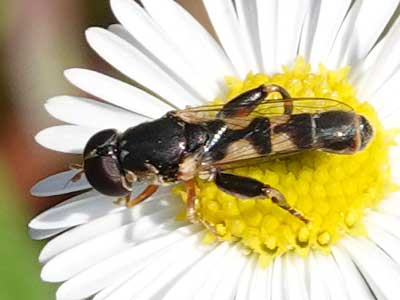
Fairly common and the only hoverfly you are likely to see with such enlarged femora
Volucella bombylans

Sometimes known as the Bumblebee Hoverfly as it is a very good mimic and often wronly identified
Volucella inanis
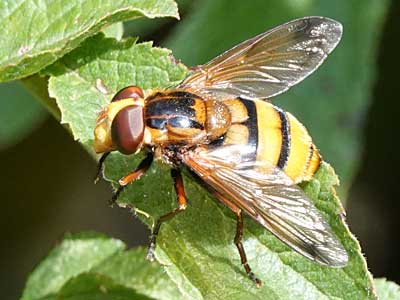
A wasp mimic which, like all the Volucellas, is larger than most hoverflies
Volucella pellucens
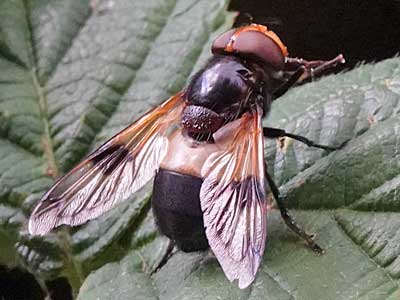
A very distinctive hoverfly, sometimes called the Great Pied Hoverfly
Volucella zonaria
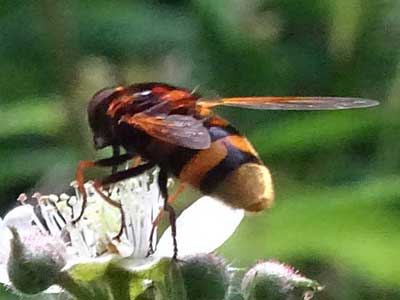
Out largest hoverfly, sometimes reaching almost 2cm long, it is also called the Hornet Hoverfly
More Information
All About Hoverflies is a useful page and has lots of photographs.
If you are interested in contributing to the UK Hoverfly Recording Scheme there is a very friendly Facebook group run by some extremely knowledgeable people.
An excellent book is "Britain’s Hoverflies" by Stuart Ball and Roger Morris, part of the "Wild Guides" series.
Photos on this page by Peter Hunnisett

